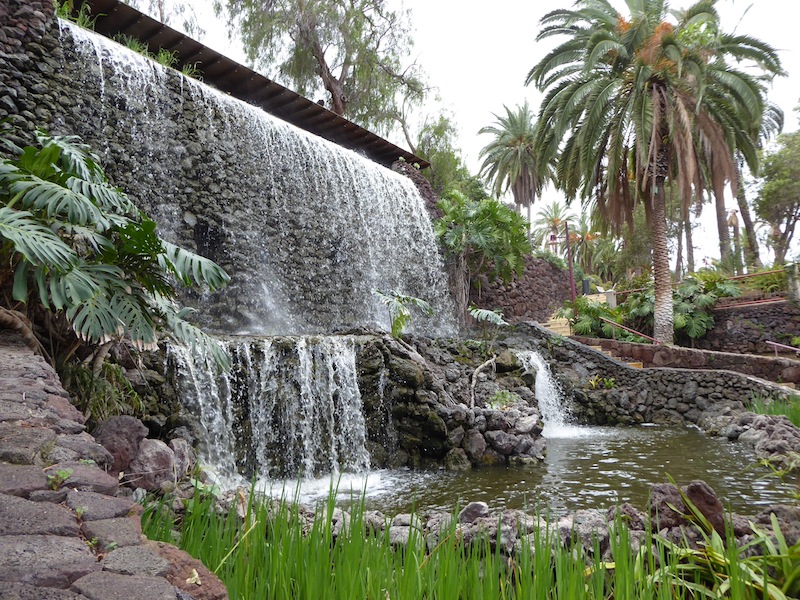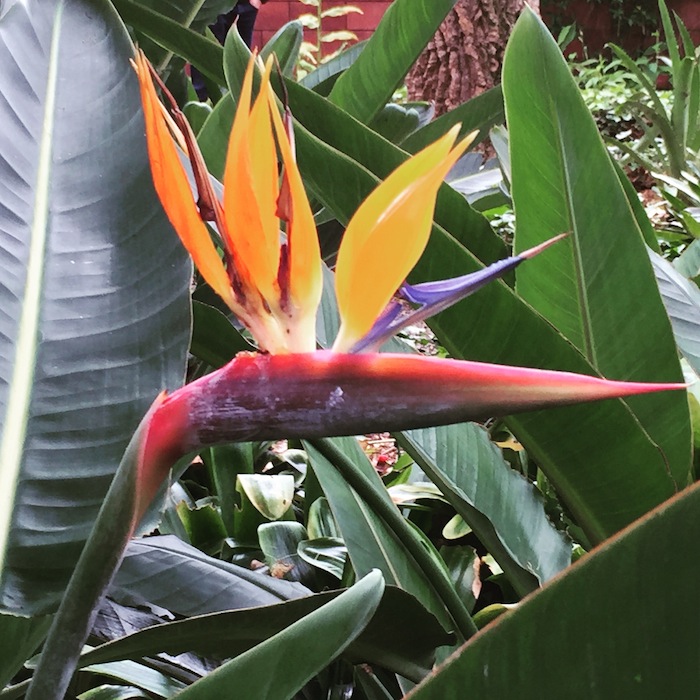Puerto de la Cruz is part modern resort, part historic harbour village. And it’s surprisingly green too.
Walking around town, and we did a lot of that when the weather was drab, we were impressed by the way locals kept their gardens tended and how even the smallest of green spaces had been kept spick and span by their owners. Londoners could learn a lot…
The star among the parks and gardens is the Jardin Botanico, or the Jardin de Aclimatacion de la Oratava as it’s officially and extravagantly known. And although it was just over the road from our hotel, we ended up there after a strenuous uphill walk through the town from the old harbour.
At the hideous road junction at the Calle de Valois, we climbed some steep steps towards the old Hotel Taoro. Gardens have been built into terraces in front of the building and include water features and a dramatic waterfall.

The Taoro was once the town’s grandest hotel, dating back to the 19th century when tourism to the Canaries was beginning to take off. Later it became a casino but now it’s neither – yet it has some of the best views out to sea in Puerto de la Cruz and would be a gem if it were restored to its former glory. Beyond the old hotel lies a flatter stretch of parkland, overlooked by mountains that surround the town.
Nearby are the Risco Belle Aquatic Gardens, which our trusty Lonely Planet suggested were unmissable. They’re well hidden, thanks to some poor signage, tumbling back down the hill from the grounds of a charming villa. Today the building is a cafe and the lawns are a place to stop and enjoy a drink when the weather is good. On such a cool and cloudy day, though, we didn’t bother.
We paid our 4 euros and followed the path downhill through various levels of water garden. But it was disappointing. The book had promised dragonflies and herons, birdsong and beauty, but in March there was very little colour and precious little bird action.

Water lilies and other plants covered the ponds but it was too early for them to be at their colourful best. Tinkling water features provided a soundtrack but the gardens felt a little neglected, suffering from the effects of the cooler winter months. Perhaps they would be magnificent in May and June…
Still, we staggered across the stepping stones and up and down the narrow paths, wondering how on earth all the pensioners who had migrated to Puerto de la Cruz during our stay would cope with the place. And in Britain, I’m sure the health and safety people would’ve roped half of it off.
The Jardin Botanico is much more impressive, even in March, and it must provide some excellent shade in the heat of summer. Established in the late 18th century, it has a wealth of palms and tropical plants, trees, shrubs and herbs, some mature, some more recent.

Wandering up and down the paths, it was like exploring the world in a garden with some notable representation from Australasia. The most staggering exhibit is a 200-year-old giant Ficus Macrophylla Higuera de Lord Howe – a tree that looks as if it’s on steroids, with multiple trunks that give it the look of a Doctor Who alien.
The additional trunks begin as feathery roots that emerge from the branches high up, and which slowly grow down in search of soil. When they reach their goal, they start to thicken, providing more stability and another source of food.

These are the gardens that, apologies Lonely Planet, I would describe as unmissable.
We ended back at our hotel over the road, the aptly named Hotel Botanico, where the gardens are almost as impressive and tended by an army of staff. Giant palms dominate and provide shade, but the grounds are full of great planting, including Birds of Paradise with their colourful flowers, ancient olive trees and countless other wonders.
A real botanical gem.

